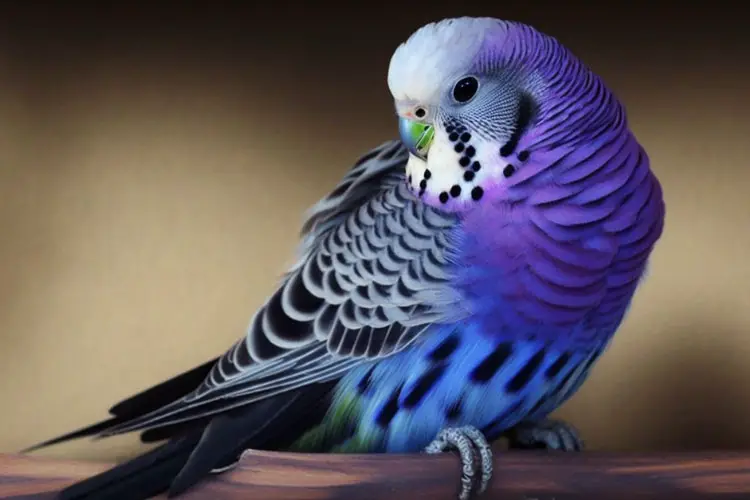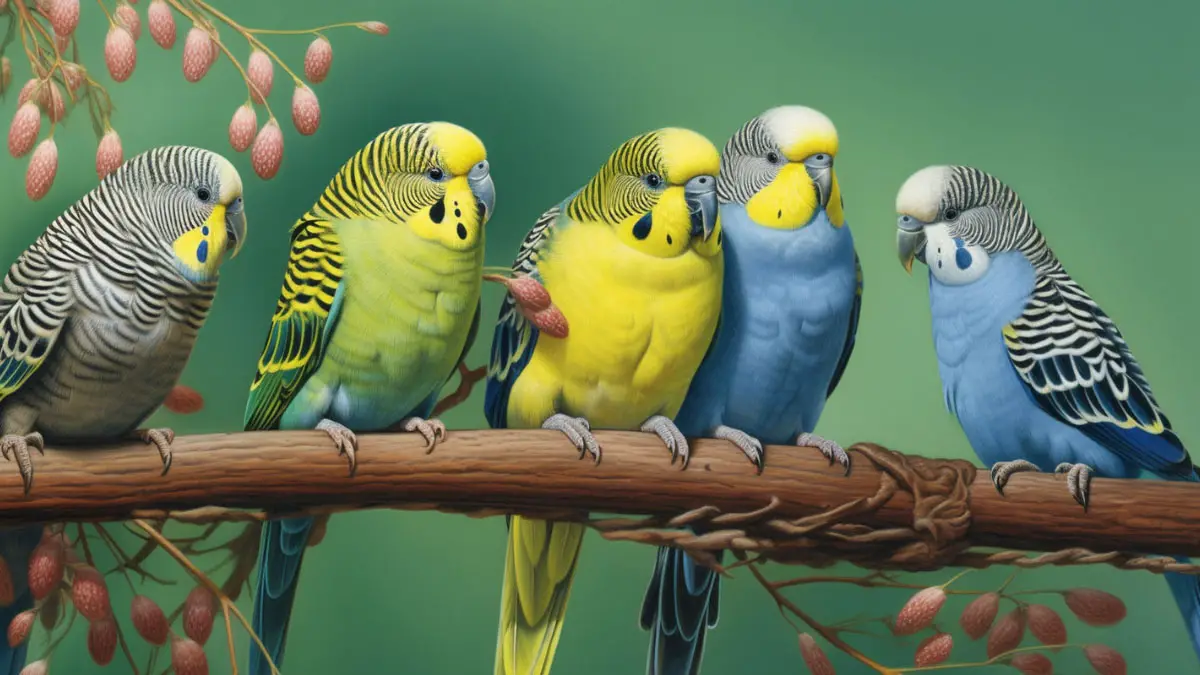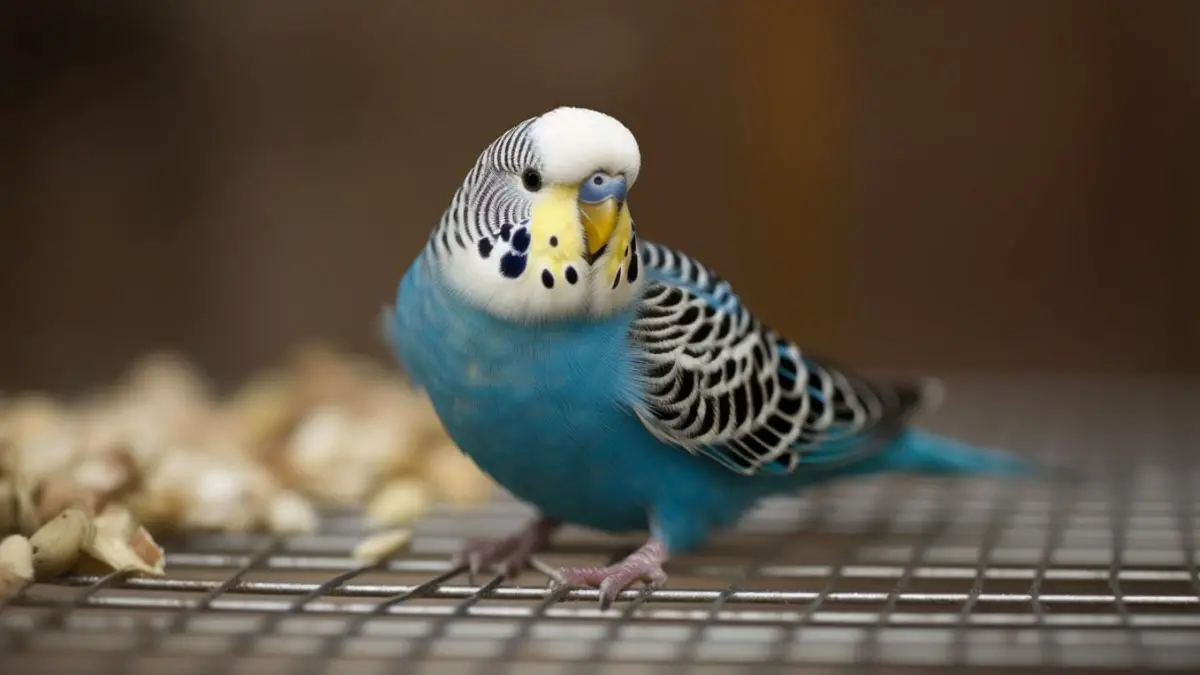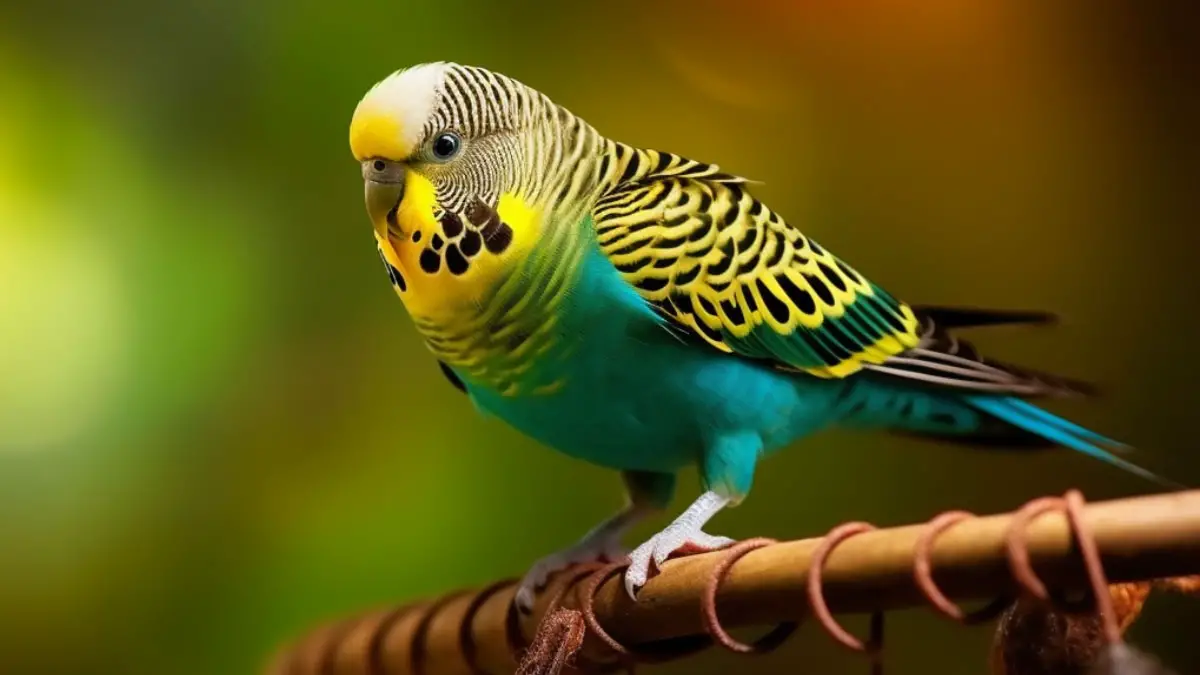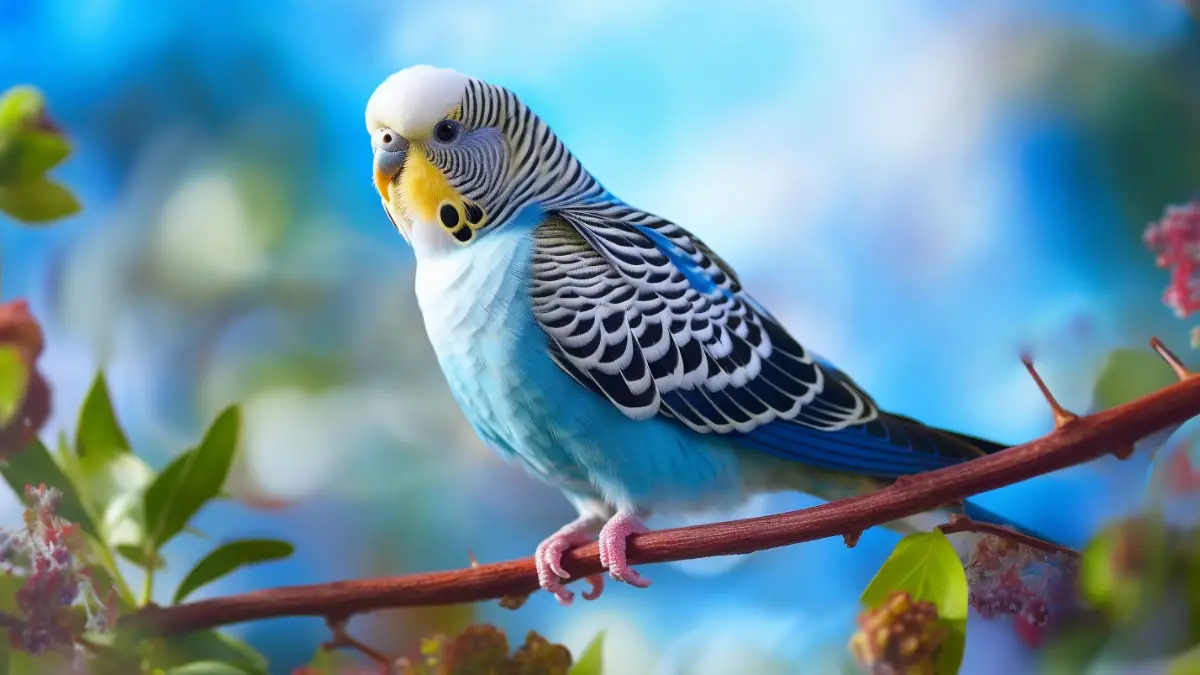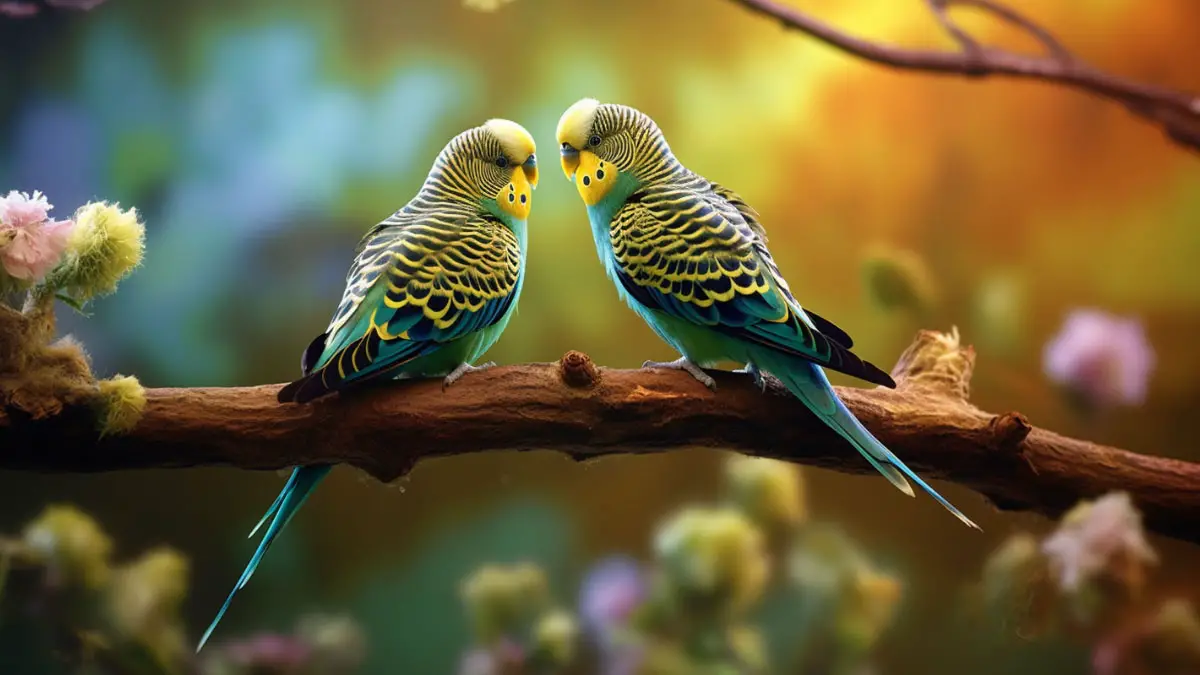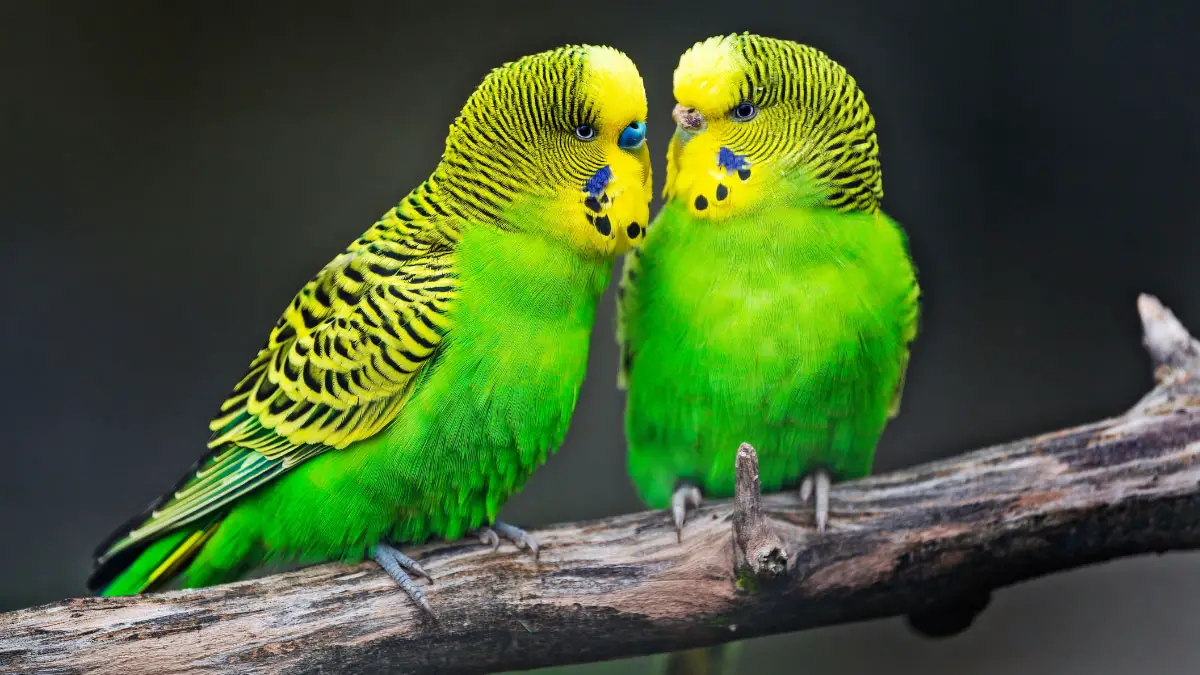While wild budgies need the original color green and yellow for camouflage, the captive ones don’t. Breeders can create new color variations with captive budgies, producing spectacular colors, like purple, which bird lovers enjoy watching.
So, what are purple budgies? Purple budgies are budgies with the violet color mutation achieved by breeding budgies with specific genes. The purple color is rare and requires certain variations and intensity to produce. The color is possible to get from both blue and green-based colors.
This article covers as much information as possible on purple budgies, their origin, where to get them, and their price.
What Is a Purple Budgie?
Budgies are naturally found in the drier parts of Australia, where they have lived for over five million years. Since the 19th century, the birds have been bred in captivity producing colorful mutations. Purple budgies were first bred in 1934 in Australia and a year later in Europe.
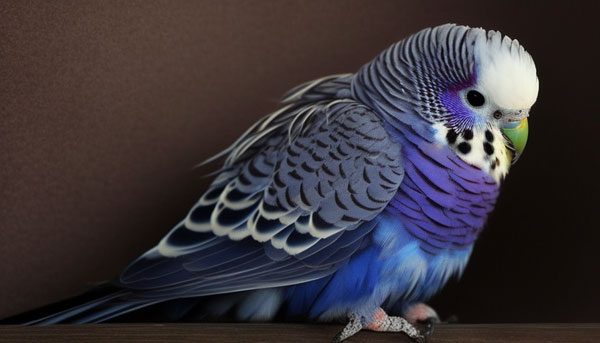
Purple budgies are budgies with a violet color that is achieved by breeding birds with specific genes. Since the color is achievable from the green and blue-based birds, there are over 18 possible combinations resulting in the violet. Of the 18, only three have the acceptable variation and intensity to produce an agreeable purple appearance satisfying the budgerigar organization.
Purple budgerigars can have black and white patterns on the wings, with the intensity depending on the genes. The budgie’s head can be white, yellow, blue, violet, or green, which depends on the bird. The birds also have stripped markings on their head, orange beaks, and pink feet.
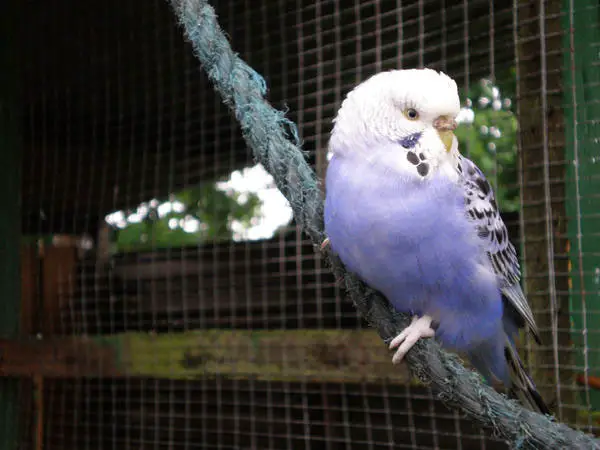
Like other colors and mutations, purple budgerigars need proper care from their owners. They need a spacious cage with toys and like other social birds, require the owner’s attention to bond. Purple budgies can live in pairs or in a flock from where they can pick mating partners. They should have a balanced diet and must be taken to an avian vet every six months for a checkup.
Are Purple Budgies Rare?
The purple budgie mutation is rare since the birds are selectively selected and bred. The budgie parent’s melanin, a substance responsible for darker shades of colors, must produce an equitable amount. The psittacine, which is responsible for yellow colors also must be fair to produce the vibrant violet required. Breeders often end up with the wrong color and intensity, hence the rareness.
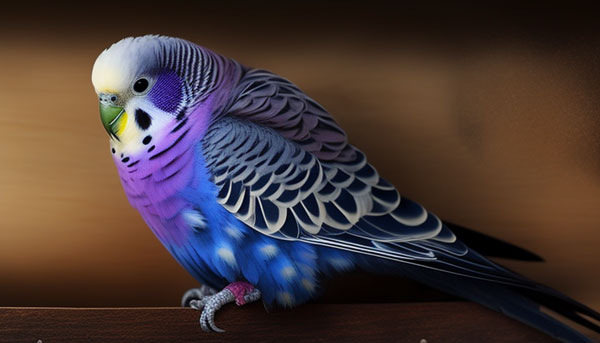
The birds with the required genes deteriorate in health after years of inbreeding. In an article on inbreeding detrimental, inbred birds have shorter lives and don’t reproduce well compared to others. This contributes to the rareness since new birds must be researched and bred every time for healthy offspring.
Where can I Get a Purple Budgie?
Since the purple budgie is not natural and must be mutated, it’s hard to find one. The rareness of the bird also contributes to hardship, as only few breeders can successfully produce one. However, since only breeders can mutate the color, research the reputable ones online.
Another option is to buy the bird from pet stores where varieties are available. The downside with this option is the birds are not always in their best shape, and the color is hard to find. Also, if the bird is available, it’s likely to be sold at inflated charges due to its rareness.
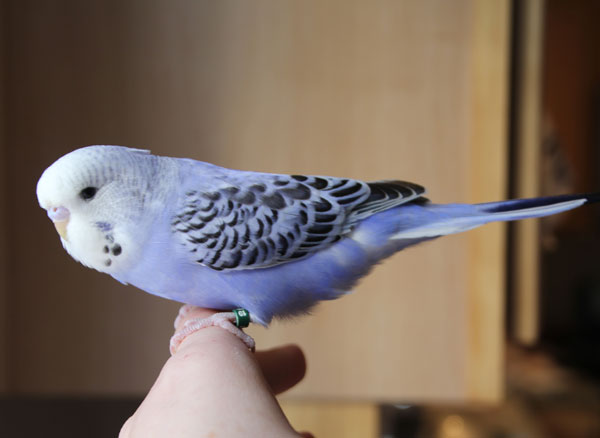
Again, you may take home a budgie that has undergone mutation far too many times. Such birds will look beautiful, but they don’t enjoy the best life quality. You don’t want to purchase a bird that will suffer in your hands, or one that will not live long enough.
Are Purple Budgies Expensive?
The fact that purple budgies are rare and hard to breed makes them expensive. The birds are not commonly found in pet stores as some colors like green and yellow are. This makes any pet store with a purple-colored budgie overcharge or even bid for the highest buyer.
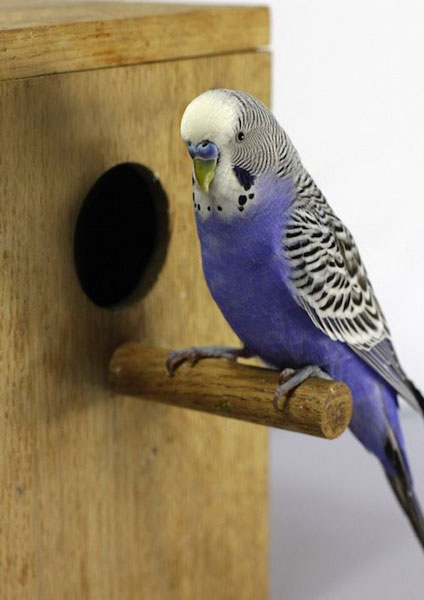
There are also few breeders who can successfully breed the right violet color required. Finding a genuine one is time-consuming as most found online cannot achieve the color. The experienced breeders are also expensive to buy from, though they’re much preferred over a pet store since their birds are healthier.
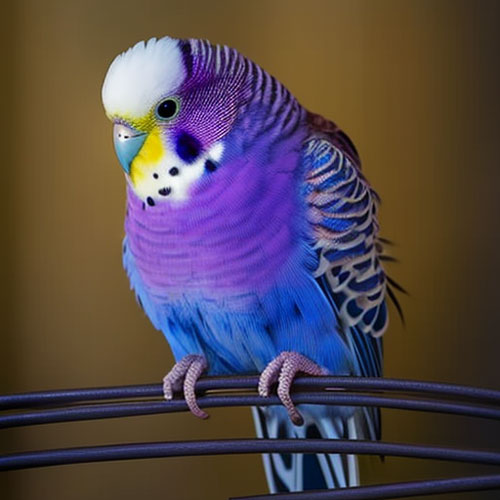
How Much Does A Purple Parakeet Cost?
A purple budgie can cost up to $30, depending on the violet color intensity. The budgie’s age can also influence the price as the trained birds are likely to cost more than the younger and untrained ones. A budgie with the ability to breed future chicks with the double-factor violet also costs more than one with a single-factor violet.
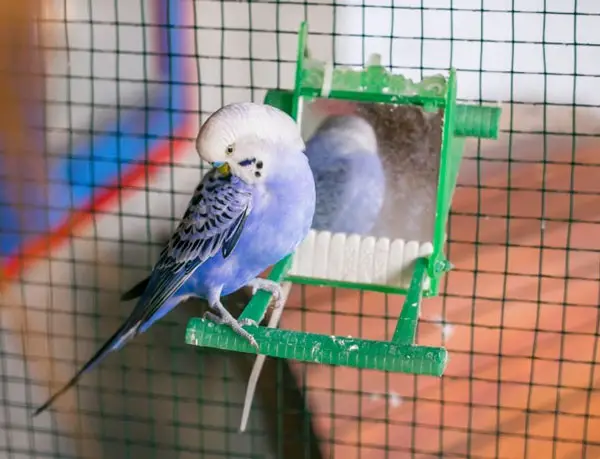
Some pet stores can have a purple, though at inflated prices. Make sure to get all documents regarding the bird information for future medical use. Also, buy the bird from a trusted breeder with healthy birds.
Are Purple Budgies Female or Male?
Purple budgies are both male and female which you can identify by looking at some features like their cere. A male cere is almost always dark blue while females have a tan or brownish. However, young male purple budgies have purple or blue cere while females have lighter blue.
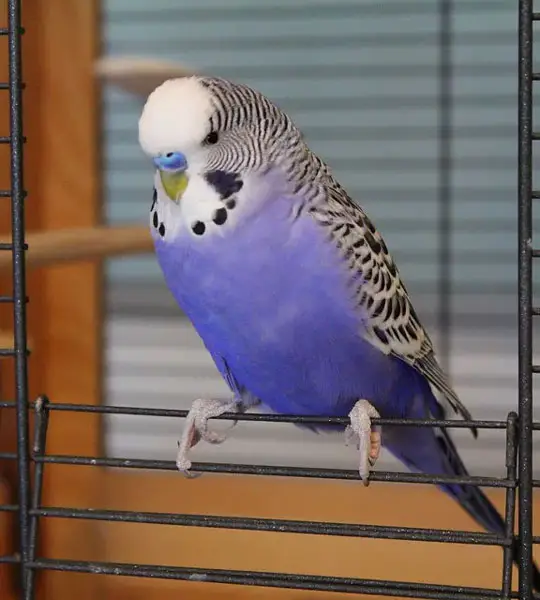
However, if you are having a hard time determining the bird’s gender, get help from a vet. Also, you can get a DNA test done by a professional to tell the pet’s gender. Some birds also contain information handled when they’re bought, which also contains their gender descriptions.
How To Tell The Age of A Purple No Budgie
There are several ways to tell the age of your purple parakeet. You can always check the bird’s record from the documents received while buying. However, if there are no documents, you can tell by physically examining your bird.
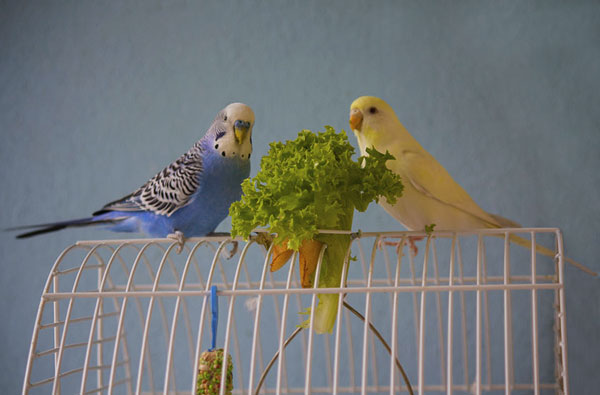
Most young purple parakeet cere is light blue, blue, or purple. If your bird is very young and you notice their cere are any of these colors, it’s less than 8 months. You can also check the formation of the iris, where birds younger than four months have none. After four months, a dark gray iris starts to show and continues lightening, becoming light gray at 8 months.
Purple Budgie Lifespan
Like other colors and mutations, purple budgerigars need proper care from owners for longer life. Their lifespan is between 6 to 12 years, which can be achieved by keeping them healthy. Purple budgies need a spacious cage with toys to exercise and keep fit.
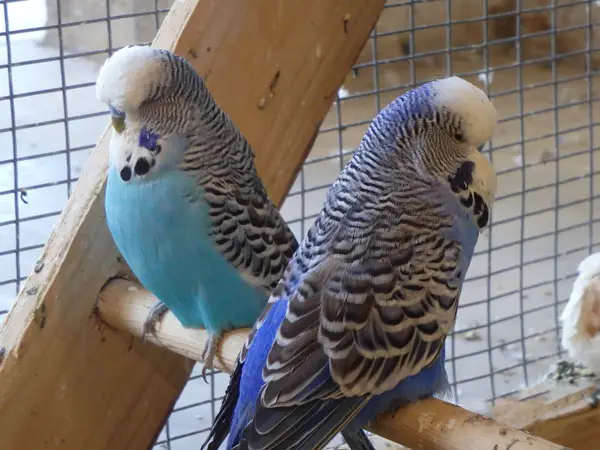
Purple budgies are also social, and they require the owner’s attention to create a bond. They can live in pairs or in a flock from where they can pick mating partners. They should have a balanced diet and must be taken to an avian vet every six months for a checkup.
Does My Purple Budgie Need Another Purple Companion?
All budgies need company and purple budgies are not an exception. If your purple budgie stays alone, no doubt it needs a companion. But, if you spend quality time with it, you may not necessarily need another budgie. If you realize the need to get it a companion, the color shouldn’t worry you.
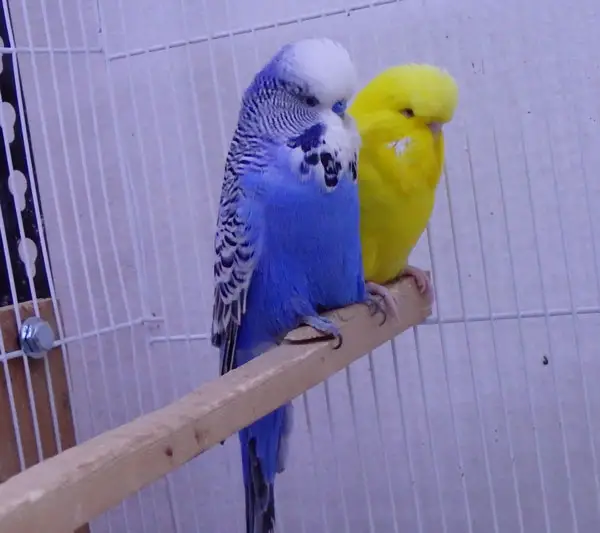
Instead, focus on the gender to avert territorial conflicts. Normally, two male budgies, purple or not, co-exist better than females because they are less territorial. Also, male parakeets are friendlier, while the females are more territorial.
Can Purple Budgies Bite?
Yes, purple budgies can bite. They get agitated like any other budgies, but it’s not because of their color. If they are in fear, lonely, or angry, they may bite when you try approaching them. The good news is that if you understand and treat them right, you will manage their aggression easily.
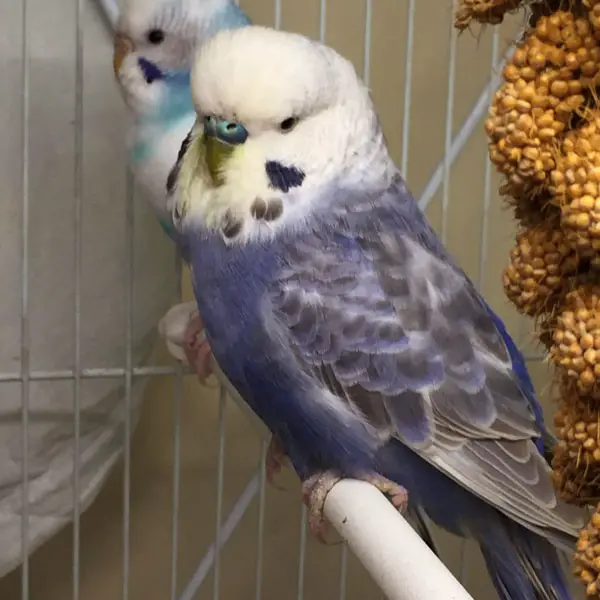
FAQ
While there are over thirty color combinations of budgies, some are rare, making them sound only like a myth. However, as most pet lovers do, research can help clear the doubts and teach more about the birds. The following are some frequently asked questions that will help clear out some of your doubts.
It’s very unlikely for a purple budgie to be born in the wild though it’s possible. The bird’s green and yellow colors provide better camouflage in the wild, as they hide from predators like birds of prey. However, most of the time, the color is achieved by breeding budgies with specific genes, which only experienced breeders do.
Because of the difficulty of breeding the right violet color with new birds, most birds are inbred. Inbreeding can increase cancer risk and result in short life expectancy, among other medical issues. However, breeding should be done by a professional breeder who should be able to prove the bird is healthy. If you have a reliable breeder, you should never worry about health concerns because these birds have always been healthy and can live up to 12 years.
However, you need to feed your purple budgie the right food to keep it healthy. Do not expose your purple parakeet to a seed diet alone. If you want them to live a long, healthy life, you’ve to cater for all their nutrition needs.
Your avian vet will advise you to incorporate fresh veggies, fruits, pellets, and clean water. Occasional treats like mealworms will also go a long way in keeping your purple budgie healthy. Combining the right foods ensures your bird gets the necessary supplements for proper growth. Your purple budgie may seem to enjoy seeds, but it doesn’t mean this should be their exclusive meal.
Outro
From 1805 when they were first scientifically described, humans have mutated budgies to over 30 color combinations. However, some colors remain rare, requiring specific genes to be successfully archived. This requires scientific knowledge to study the birds to provide the right shade of the color needed.
Purple budgies are some of the rare budgies that are achieved by breeding birds with the gene capable to produce the violet. They can be bought at pet stores, though most pet lovers prefer buying from a breeder they can trust. By reading this article, you have a fair amount of information on purple budgies, their appearance, history, and much more.
